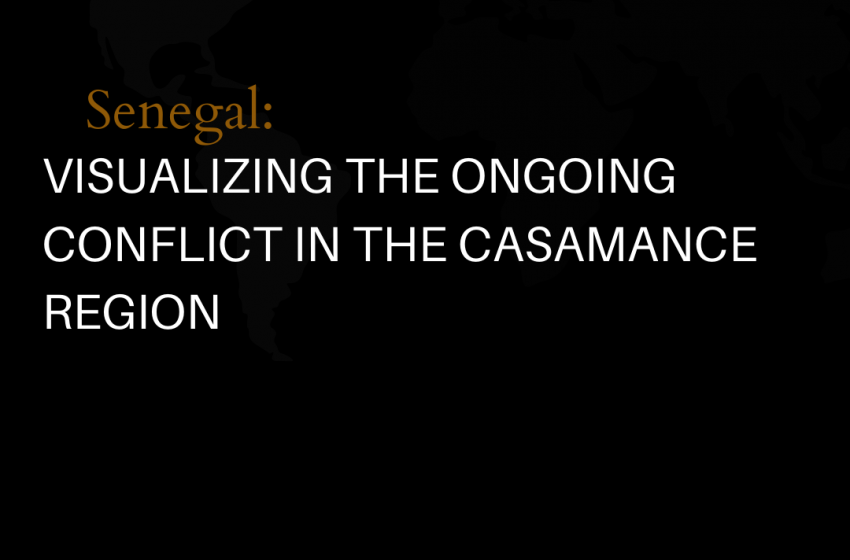On Sunday, March 13, 2022, security forces in Senegal launched a military operation against fighters of the Movement of Democratic Forces of Casamance (MDFC), a separatist group in the southern region of the country.
In an official document transmitted by the Gambian National Crisis Management Agency, a total of 6350 people were forced away from their homes and are currently seeking refuge in the Gambia.
What is the Casamance conflict about and why is the Senegalese government resulting in a military neutralization of the MFDC? In a series of infographics, we would explain the history of the conflict, significant timelines, as well as statistical data on casualties.
Casamance Conflict
The 40-year-long low-level conflict between the government of Senegal and the Movement of Democratic Forces of Casamance (MFDC) centres on the demand for independence for the people of Casamance.
The MFDC has argued that the people of Casamance have endured economic and political marginalization for many years, as seen in the worsening underdevelopment of the region and the lack of political representation over the years.
The movement’s clamour for sovereignty is also based on the idea that the Casamance has always been geographically, ethnically and religiously different from Senegal and as such, should not be part of a unified Senegalese nation-state.

The position of the Casamance region is another case in the MFDC’s seccesionist discourse. The Casamance region is geographically separated from northern Senegal by the Gambia then borders Guinea Bissau on the South. There is only a small connection with a Senegalese region known as Tambacounda to the east.
The ecological and climatic differences between the region and the rest of Senegal is another distinct marker in the group’s separatist arguement; while Casamance has a humid subequatorial climate with abundant rainfall and thick forest that is suitable for agriculture, most part of Senegal, especially northern Senegal has dry climate that is characterized by constant drought and desertification.
It is believed that Senegal’s GDP is dependent on Casamance’s agricultural produce but the group have questioned government’s continues move to invest the processing of these produce outside the Casamance region; dening the Casamançais people employment and other economic opportunities on one hand and fueling growing sentiments of exploitation and neglect on the other.
Timeline Of Casamance Conflict
The conflict is divided into 5 distinct timelines that began with an initial protest in 1970 over the lack of economic growth in the region. A series of protests was launched in the Ziguinchor area against the Senegalese governement, which was met with some resistance by the military.
By 1982, the separatist movement to be known as the Movement of Democratic Forces of Casamance (MDFC) was formed and more organized but less peaceful protests were staged. Due to severe crackdowns by the Senegalese military, a radical and armed wig of the group was created.

Oil was discovered in the Casamance region in 2001, leading the MFDC to heighten clamours for immediate independence but they were brutally suppressed by the Senegalese military. Historians claim that this influenced the MFDC to move from organized protests to outright war against the Senegalese military. Sources report that a total of 50,000 people were displaced in Casamance between 1992– 1999; the bloodiest era of the conflict.
Peace talks between the parties began around 1999 to January 2000 but low-level fighting continued till another round of negotiation was arranged in 2005. The result was also partial as attacks continued from the MFDC and the army till 2006.
Statistics On Casualties and Displacement
The low-intensity nature of the Casamance conflict might have made it less popular than other conflicts in Africa but has not prevented the outrageous loss of about 5000 people and the displacement of 62,638 people and counting.
The 2022 military operation in the region has displaced a fresh 6,350 people into the neighbouring Gambia.
Current Situation In Casamance
The government of Senegal have insisted it has tried to broker sustainable peace with the MFDC but have accused the movement of countering its efforts with attacks on military posts and civilians. This has led the armed forces of Senegal to begin its recent offensive against the MFDC. The operation which began on March 13, 2022, has led to the displacement of over 6,000 people.
Meanwhile, Macky Sall, the president of Senegal, has agreed to make “definitive peace” in Casamance the priority of his second term.

